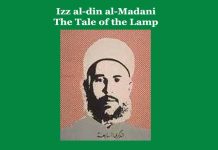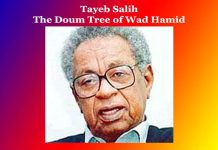Leo Tolstoy | What Men Live By | An Analytical Study
Leo Tolstoy | What Men Live By | An Analytical Study
Leo Tolstoy | What Men Live By | An Analytical Study
‘What Men Live By’ is a Russian short story of the parabolic kind written by Leo N. Tolstoy (1820-1910). The love of man is the main theme of the story. In the story, there are three episodes as the episode of Simon and Michael, the episode of a rich gentleman and the episode of a Lady with two girls, and narrating these three episodes the author has found out the answers to three questions — What dwells in a man? What is not given to man? What do men live by? There is a touch of supernaturalism in the story.
The first episode begins with Simon, the shoemaker. He was poor and lived with his small family. He was too poor to own enough clothes for winter. What he earned, all went into buying food items. He had but one sheepskin coat which was won out and he desired to get a new one. Before winter, Simon saved up a little money, there were three rouble notes lying hidden in his wife’s box and five roubles and twenty kopeks were owed him by customers in the village. One day in winter he took three roubles note in his pocket, cut himself a stick to serve as a staff, wore his wife’s worn-out nankeen jacket and started off to market in order to purchase a sheepskin coat. He first went to the village to collect the money that he had to be owed by his customers but they did not pay him. Then he thought that he would buy his coat on credit. But the dealer would not trust him. Simon felt downhearted. He spent twenty kopeks on vodka and started homeward without having bought the coat. As he drank some vodka he felt quite warm though he had no sheepskin. Then while he reached the village shrine he happened to see something like the head of a man. First, he hesitated but eventually, he went near him and found that it was none but a man who was naked and trembling in the cold. Simon asked his name but he did not answer. He wrapped him up with his nankeen coat and gave his shoes to the stranger to put on his feet and then Simon took the man by his elbows and helped him to rise and walked on home. When Simon with the man arrived home, his wife began to be worried about her husband as he neither bought a sheepskin nor any food staff and instead, he returned home with a naked man. Angry words rose to Matrena’s (Simon’s wife) lips. Simon said to his wife, “Have you no love of God?” Matrena heard these words and as she looked at the stranger, her heart softened toward him. She came back from the door and going to the stove she prepared some food for them. She served food to them. The stranger, being shown pity for him, smiled at Matrena. They asked the stranger’s name and about his whereabouts but the stranger said, “I am not from these parts. When he was asked about his whereabouts he said that he did not know. The next morning they woke up from sleep. Simon said, “One has to work for a living. What work you know?” Simon asked his name again and then the stranger said that his name was Michael. Afterward, Simon taught him how to mend and make shoes. Since then Michael began to work with Simon. He kept busy on his duty only and hardly had spoken to anyone.
In the second episode, the author narrates that one day a rich gentleman came to Simon and ordered him to make a shoe for him with a piece of German leather. The man ordered that the boots must last for a year without getting worn out within this period. He would pay them ten roubles for it. Michael looked at the gentleman and smiled. Simon asked Michael to make the shoe. Michael began to make it. He cut the leather round and made soft slippers. Simon seeing it cut that way began to be worried as the shoes were not made as was directed. In the meantime, a servant of the rich gentleman came in and let Simon know that the master had died that very night while he was returning from Simon’s home. So the boots should not be made and instead, they should make a soft slipper for the dead. Simon gave him the slipper that was made by Michael.
The third episode is about a woman who one day came to the house of Simon with two girls to get two pairs of shoes for them who were twins. One of the two girls was lame. When Simon’s wife asked about the girls then the woman said that they were not her own but she had adopted them and had fed them at her own breast. Their parents were dead and their mother had died just after their birth. Then Michael looked at them and smiled.
Six years already had passed and then Michael made them know that he was not an ordinary man but an angel. He came to live there as a man because of his sins. As soon as the three episodes narrated above happened, Michael had found the answers to three questions and with learning these three answers his sins had been forgiven by God. He explained that he sinned against God by disobeying God’s order. He explained that he was an angel and one day he was sent by God to take off the soul of the woman who just gave birth to twin girls who were adopted by the woman who came to them for having made two pairs of shoes. On the day when the soul of the mother of the twin was to be taken off by him, then seeing the angel of death the woman prayed to him to leave her as her children were just born. She said that she should be spared for some years so that she could nurse them till they learn to stand on their foot. The angel hearing this returned to God without causing her death and reported to God about the woman’s wishes. Then God said, “Go, take the mother’s soul and learn three truths: What dwells in man, what is not given to man, and what men live by. Michael then explained that he had gotten the answers to these three questions by the three episodes as happened already. He said, “It is love alone by which they live. He who has love is in God, and God is in him, for God is love.” Saying Michael sang praise to God and sour up to heaven.
Thus through the story (parables), the author comes to impart a moral lesson to his readers that it is love by which men live.
There are three main Characters – the strangers (Michael), Simon and his wife. Michael is the main character. He is an angel who came to live like a man because of his sins. Living like a man in human society, he came to learn that men live by love alone. Simon is a type of the poor but he has an exceptional quality that he is sympathetic to the poor and he loves a man for God’s sake. Simon’s wife Matrena is a type of poor woman but she also bears a heart full of love for men. The other characters as- the rich gentleman and the woman with two girls are minor characters. The gentleman is very rich and arrogant. But the woman is very sympathetic and full of love for children.
In narrating the story the author has employed the Objective Method with skill. In this method, an author keeps himself away from his story and delineates his story objectively.
The story, in Structure, is a perfect one. It bears visibly all the stages of a good short story. The opening is direct. In the opening, the storyteller introduces his principal character, Simon. The story begins to develop when Simon took up Michael on the way he was returning home without purchasing the sheepskin coat. The story gets its climax when Michael makes a soft slipper instead of making a pair of strong boots for the gentleman.
The Setting of the story is consistent with the events and situation. The author gives a good deal of description of his main character along with the environment of his event.
The Dialogue employed in the story is very logical as he uses them sparingly but all the dialogues have taken his story ahead and unfolded the inner nature and motives of his characters.
The Philosophy of Life is also found in the story. The author has come to mean through the story that love is the essence of life and men live by love alone.
The Language of the story is very simple as it is characterized by the use of concrete and formal (not unfamiliar) words and phrases and is free from poetic imagery and much emotional expression.
All the Qualities of a good short story as —unity of purpose, brevity, spontaneity and universality are present in this short story. The brevity is also maintained throughout the story as all the component elements of a good short story are employed in the story with possible economy without causing any harm to the perfectness of the story. Thus the universality is gained by means of the reliable representation of the theme and event. The story begins and ends with a spontaneous logical order and the author seems not to use any force in bringing about the denouement of his story through proper stages.
As a short story, it is of long length as it is composed of about seven hundred words.
As the entire component elements along with the required qualities of a good short story are present in it in a logical order so it may be called that it is a good short story but as a parable, it is a better one as it imparts a moral lesson and bears a supernatural character i.e. Michael who is actually an angel. 0 0 0.
Leo Tolstoy | What Men Live By | An Analytical Study
Read More: Leo Tolstoy’s Short Stroy ‘God Sees the Truth But Waits’-An Analytical Study
What Men Live By
N. B. This article entitled ‘Leo Tolstoy | What Men Live By | An Analytical Study’ originally belongs to the book ‘World Short Story Criticism‘ by Menonim Menonimus. Leo Tolstoy | What Men Live By | An Analytical Study
Books of Literary Criticism by M. Menonimus:
- World Short Story Criticism
- World Poetry Criticism
- World Drama Criticism
- World Novel Criticism
- World Essay Criticism
- Indian English Poetry Criticism
- Indian English Poets and Poetry Chief Features
- Emily Dickinson’s Poetry-A Thematic Study
- Walt Whitman’s Poetry-A Thematic Study
- Critical Essays on English Poetry
- Tawfiq al-Hakim’s Novel: Return of the Spirit-An Analytical Study
- Tawfiq al-Hakim’s Novel: ‘Yawmiyyat Naib Fil Arayaf’-An Analytical Study
- Analytical Studies of Some Arabic Short Stories
- A Brief History of Arabic Literature: Pre-Islamic Period …
Books on Linguistics by M. Menonimus:
- A Brief History of the English Language
- Essays on Linguistics
- My Imageries
- Felicitous Expression: Some Examples
- Learners’ English Dictionary
Related Searches:
- Short Stroy Criticism
- The Indian English Short Story
- Individual and Society …
- ‘Deliverance’ by Premchand Analysis
- Summary of Rabindranath Tagore’s ‘The Exercise Book
- Short Story ‘Yellow Fish’ Essay Example
- Notes on Roger Mais’s ‘Blackout’
- ‘Blackout’ by Roger Mais
- ‘The Dog of Tetwal’ Saadat Hasan Manto
- The Dog of Tethwal
- ‘The Jewels’ by Guy De Maupassant
- ‘The Necklace’ Essay
- The Piece of String’ Analysis
- ‘The Verger’ Summary
- ‘God Sees the Truth But Waits’ by Leo Tolstoy
- ‘God Sees the Truth But Waits’Themes
- The Three Questions
- ‘Three Questions’ Summary in English
- ‘What Men Live By’ and Other Tales
- ‘What Men Live By’ …











